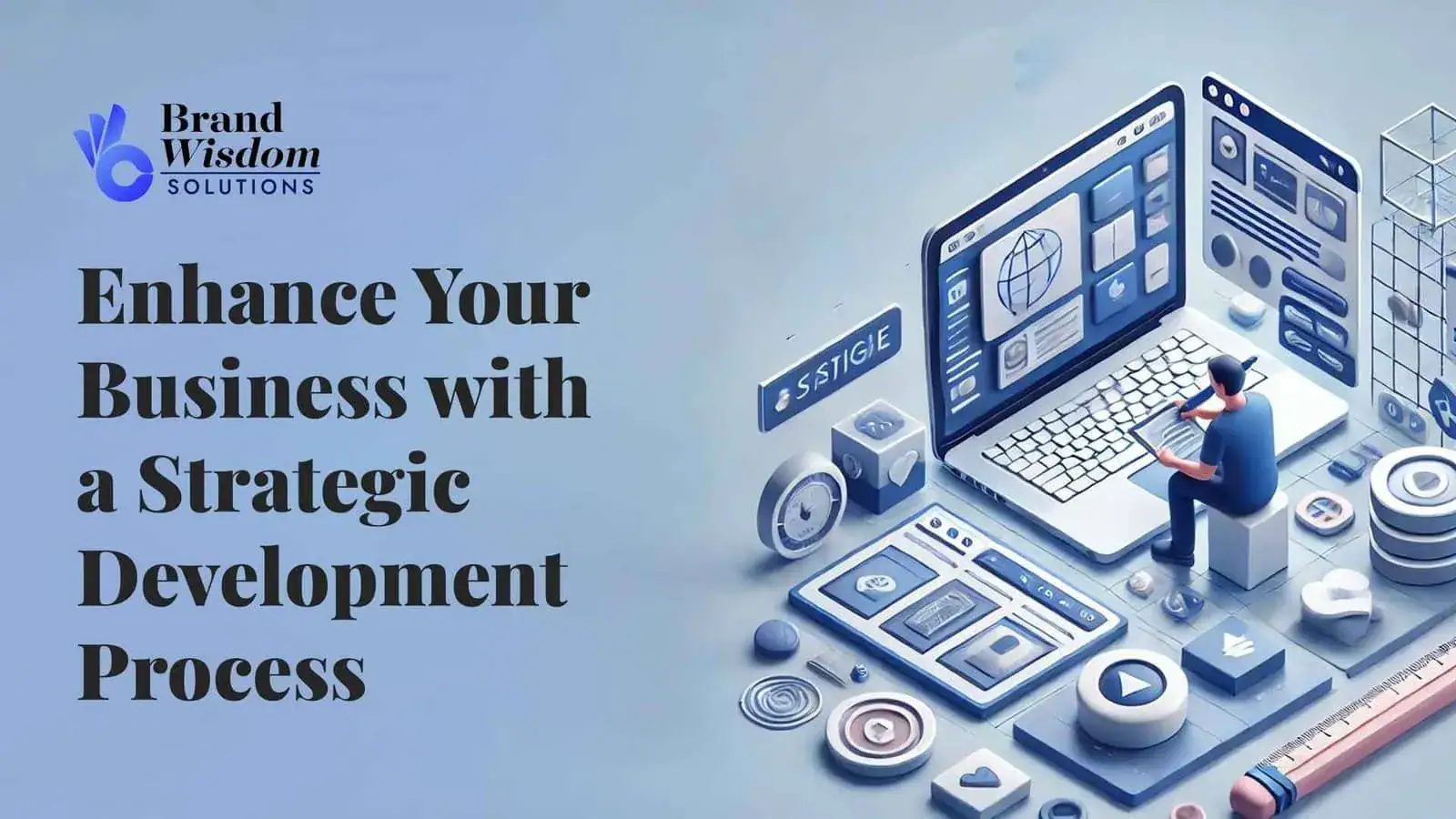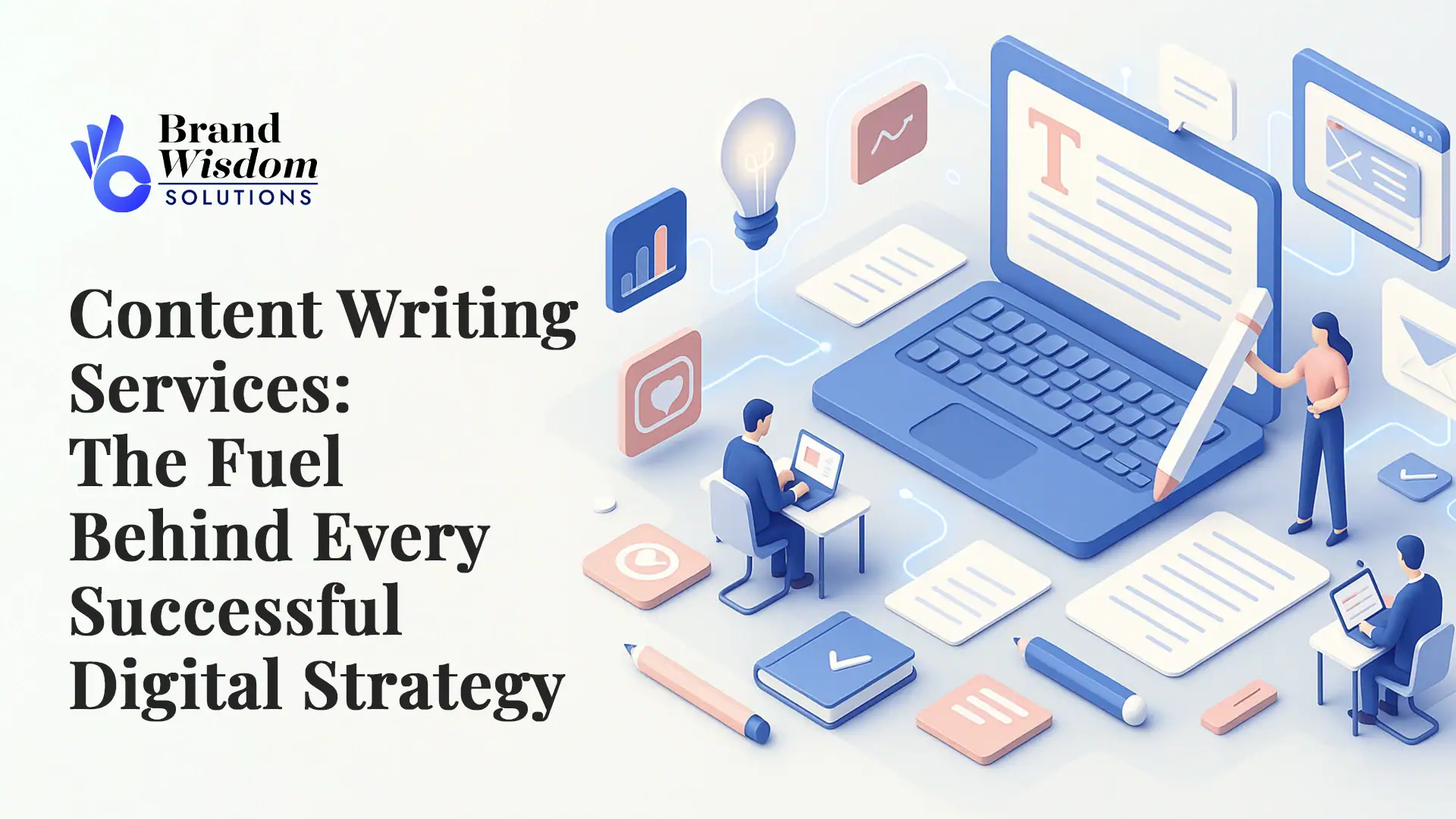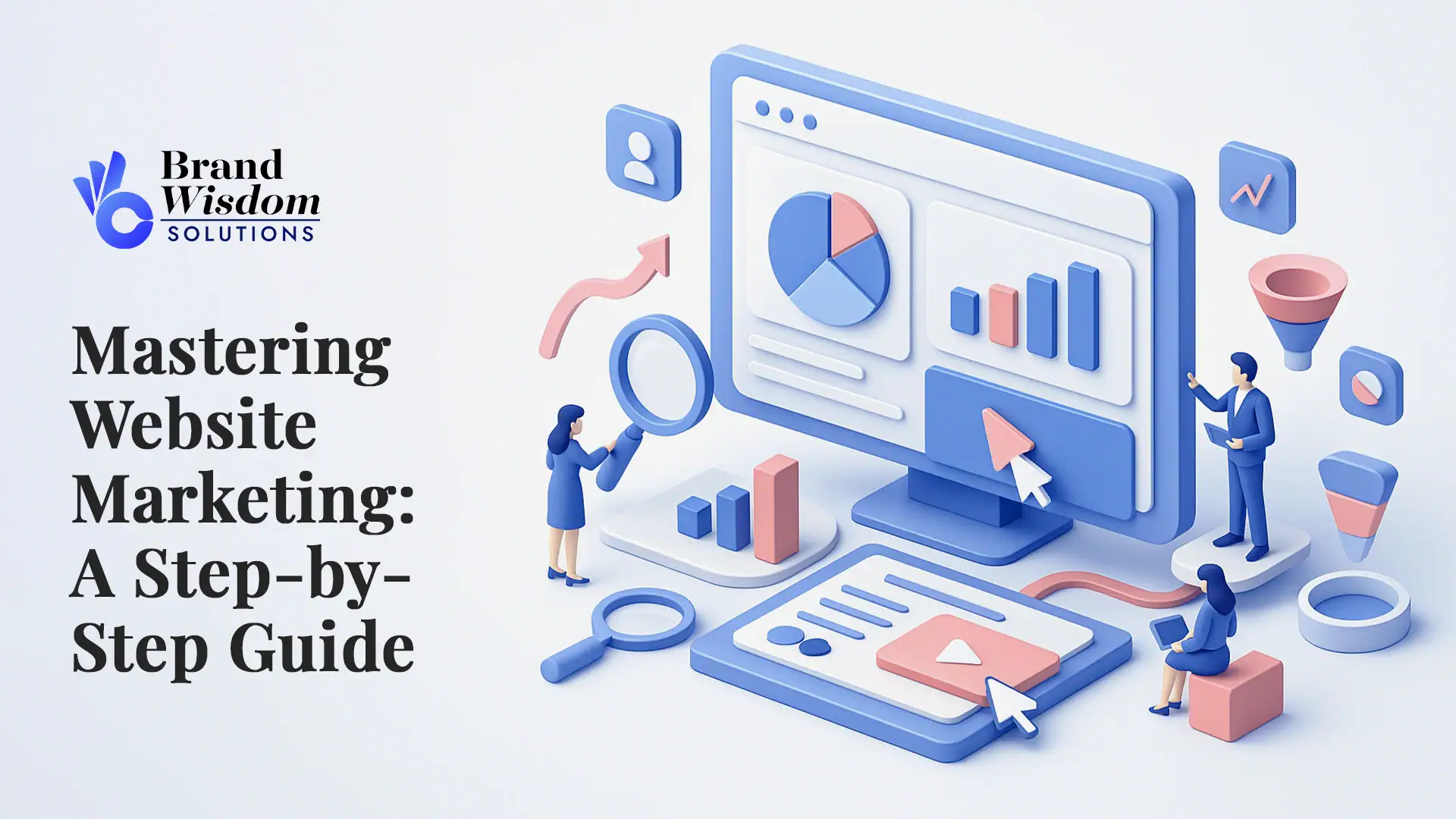In today’s fast-changing market, having a plan is a must for businesses that want to not just survive but also do well. Strategic development helps link business processes to organizational goals. This creates a clear path for success. In this blog post, we will look at why strategic development is important. We will discuss the key steps needed, the tools and methods you can use, and the problems businesses might run into.
Understanding the Essence of Strategic Development

Strategic development is simply the process of figuring out your business’s future and planning steps to get there. It is more than just setting organizational goals. It means knowing your current strategic position, understanding the market, and knowing what you can do to create a competitive strategy.
This approach helps businesses adjust to changes, make smart choices, and grab new opportunities. With a clear strategic plan, organizations can use their resources better, improve how they operate, and promote a culture of ongoing growth.
Defining Strategic Development in Modern Business
Today in business, however, strategic development tends to equal strategic management. It is the never-ending process of planning, doing, checking, and modifying the strategies to remain a step ahead of competition. This calls for directors with foresight; they cannot afford to think in the short term. Each time, it involves reasoning about current issues and future operations.
A full-spectrum strategic development approach encompasses all aspects of the organization, including operations, finance, marketing, and human resource development. Primarily, this means identifying and leveraging internal strengths; secondarily, it means recognizing potential threats and adapting to extrinsic factors that might in some way meddle with the business system.
Developing a strategic-thinking culture and regularly advancing strategies, using performance indicators and feedback from the market, can put organizations onto the path toward sustainable development and long-term success.
The Pillars of Strategic Development

A successful development plan relies on a few foundational pillars. These pillars enable you to keep your focus aligned with the goals set out in the initial plan. During the whole work process, they also align your attentiveness slowly and surely towards the main aim you want to achieve.
The vision and mission statements, along with the setting of clear and measurable goals, comprise two main parts. Combining these will give you a better understanding of what the company aims to achieve and the direction in which it is heading.
Vision and Mission: The Guiding Lights
A clear vision statement acts like a ray of hope for the organization. It describes what the organization hopes to achieve in the future. It creates an image of success while rallying together everyone concerned toward the fulfillment of the common goal.
Meanwhile, the mission statement complements the vision by stating what the organization exists for and what its distinct value is. It answers some of the key inquiries about why the business exists, who its customers are, and in what way it differentiates itself from others on the market.
Together, the vision and mission statements guide decision-making and cultivate the guiding culture of the organization. They remind everybody of the ultimate target and key values that nourish the trip.
Goals and Objectives: Setting the Path Forward
While the vision and mission give a general direction, setting specific goals is where real progress happens. Goals turn dreams into actionable steps.
Strategic objectives set clear milestones to reach the broader organizational goals. These objectives should match the overall strategic plan and flow down through the organization. This way, everyone is working towards the same purpose.
Remember, good goal setting includes regular checks and updates. Keeping track of your SMART goals helps you see any problems and change your plan when needed.
Key Stages in the Strategic Development Process

The strategic development process provides a clear method, with critical elements it is supposed to encompass. In reality, it takes one from the context of an initial appraisal through the real insertion of the strategy into practice.
The assessment of one’s own business environment allows for identification of possible opportunities and threats.
Then, taking cognizance of these insights, turn them into action. Initiatives with specific targets are set, which conform to organizational goals. This mode prepares the following pathways in the achievement of your strategic objectives.
Assessment of Current Business Position
In order to draw a blueprint, the starter of planning is to get an examination of the business environment from a perspective of measurement. This entails carrying out an analysis on the company’s inside world as well as the outside. Generally speaking, one ought to identify the internal strengths and weaknesses, along with external opportunities and threats, of one’s organization in performing the analysis.
A common tool used to do this is called a SWOT analysis. By asking a series of questions corresponding to each segment of the SWOT acronym, one can hear quite a lot of information concerning the very strengths and weaknesses of the organization.
In consideration of whatever market standing one has, the competitor must also be found out and other outside effects-from actual changes, regulations, and technology-happening towards the strategies of the company.
Identification of Strategic Opportunities and Threats
First, however, you must come to terms with your currently existing situation. From here on out, it’s all about the outside world within which your company rests. You will best identify such opportunities and threats from the external environment. Such external opportunities would consist of these phenomena- influx in market trends, advancement of technology, changes in customer’s behavioral style, and gaps in offering from competitors.
By taking note of external opportunities and possible ways of threat, the organizations can sharpen their strategic focus such that they manage their resources well to increase their chances of winning in a competitive market.
Formulation of Strategic Initiatives
Once you have established a clear understanding of your strategic position, including your strengths, weaknesses, opportunities, and threats, you will move to strategy formulation. By this stage, you are projecting specific actions that are aligned to reach your overall goals and aims.
It is therefore important to understand your target audience, competitors, and capabilities of your team before drawing the strategy. This is the stage of designing the plan of action that incorporates the best way forward to reach the set goals.
An action plan should be topical and based on the detailed plan highlighting the key results, timelines of borrowing to reach outcomes, and a responsible person for every action. A good action plan acts as a roadmap-it gives directions to execute the plan and unites people into one accord on the final goal.
Implementing Your Strategic Plan Effectively

A well-articulated strategic plan is just part of the equation; how well you execute that strategy is the real make-or-break for a successful business. This phase involves real action and an alignment of all organizational workforces within the organization.
A tireless effort in communicating strategies needs to be done. Key performance indicators should, therefore, be drawn into the picture to measure the speed of progress. Reviewing constantly also should be done to ensure that activities remain geared toward the strategic objectives.
From Planning to Action: Steps for Effective Implementation
Effective strategy implementation means moving from just thinking about plans to actually taking action. It’s about turning plans into real results. Making sure all teams work together toward the same goals is essential.
Here are some important steps to make strategy implementation effective:
- Communicate Clearly: Make sure to share the strategy clearly across the organization. Everyone involved should know their roles and how what they do helps achieve the overall goals.
- Allocate Resources: Provide necessary resources like money, technology, and people to help carry out the strategy.
- Establish a Timeline: Create a timeline that shows key milestones and deadlines. This helps keep track of progress and creates a clear path for implementation.
Staying in touch, reviewing performance, and monitoring regularly are very important. This way, you can spot any issues and make changes if needed.
Monitoring Progress and Adapting Strategies
Continuously tracking your strategic plan helps align it with the current market dynamics and internal factors so that you can make adjustments as necessary. You should consult your KPIs regularly for these pre-determined measures that provide insight into the effectiveness of your strategic initiatives.
A strategy map will allow the representation of the various components of the strategic plan visually, helping it to communicate clearly its progress while making sure that all members involved are oriented toward the same goal. This living document provides a means through which to report on progress made, bottle-necking along the way, and adjusting where necessary to make sure the strategies remain aligned toward the desired outcomes.
| Key Performance Indicator (KPI) | Target | Status | Action Plan | Owner |
| Market Share | 10% increase by Q4 | On track | Continue marketing campaign, Explore new customer segments | Marketing Team |
| Customer Satisfaction | 4.5 out of 5 rating | Needs Improvement | Enhance customer service training, Implement customer feedback loop | Customer Service Manager |
Leveraging Technology in Strategic Development

In this world that is very much reliant upon technology, businesses that utilize digital tools and data analytics stand to gain immensely. The various tools involved will enhance the whole process involved in the strategic development process. For instance, strategic planning software enables a large group of people to work together while being presented with clear data. Data analytics platforms present valuable information regarding the market.
These digital resources help businesses collect and analyze huge amounts of data, which in turn leads to data-driven decision-making and a higher level of effectiveness in strategic planning.
Digital Tools and Platforms for Strategic Planning
Digital tools are indispensable in terms of facilitating communication, gathering information in one place, and helping the other come to unison in the strategic planning process. These platforms provide different features that help throughout the entire life cycle of the strategy, starting from idea generation, strategy formulation to implementation and even performance checking.
Project management software helps teams manage tasks, deadlines, and resources effectively. This, in consequence, leads to the better implementation of strategic actions. These platforms generally contain teamwork, communication, and document-sharing tools, providing a centralized space for all strategy-related work.
Technology used in strategic development allows businesses to gain a significant competitive advantage, enhancing efficiency, making better decisions on data, and allowing for quick adaptations in reaction to changes occurring in the business environment.
Data Analytics in Strategy Formulation and Monitoring
In modern living, data analysis is very important in planning. It helps in making businesses better and brighter in decisions subjected to comparison. With the help of data, market tendencies, customer habits, and certain actions of competitors may be understood well on the part of some specific businesses.
When examining market data, financial reports, and customer feedback, they can develop useful insights. With those, they can discern patterns, identify possible problems, and quickly deploy plans that, in turn, are in accordance with their overall objectives. These plans would work even better when predictive analytics is included.
Data analytics helps to track performance indicators. And it can also be useful in discovering hidden trends in customer data, which thereby makes the decision-making process more accurate and therefore effective.
Overcoming Challenges in Strategic Development

In clear terms, the benefits coming from strategic development are big, although there are several basic problems that such businesses face in the process. Unclear communications and a lack of proper support from stakeholders may create dilemmas. Besides, there are some businesses that still fail to make any adjustments to their strategies upon clear indication of some shifts in the market. Such problems are capable of derailing the best efforts, though.
Such problems may very well prove to be the undoing of some of the best efforts. One should be proactive and pliable enough in order to meet these challenges. Reviewing the strategic plan on a regular basis is of prime importance. Feedback from the top management should also be sought. The business world is full of ups and downs, thus being ready to change where needed is the key to that.
Anticipating and Managing Common Pitfalls
Lack of clarity over roles and responsibilities can lead to confusion and impede progress. It is, therefore, better to define these roles clearly from the very outset. Open communication is the key to eliminating any confusion about the parties involved in each task in the business process.
Another common problem involved is also a lack of resources, be it funding, technology, or competent, skilled individuals. In such a case, an undertaking is bound to fail no matter how grand the plan is. Therefore, it is paramount to anticipate what resources will be needed and secure them beforehand so that the objectives may be fulfilled.
But by recognizing likely challenges, establishing clear communication, and allowing flexibility, businesses can, in fact, tackle these problems. This will enable them to fulfill their target objectives strategically.
Conclusion
In conclusion, strategic development is very important for a business to grow and succeed. By having clear visions and setting realistic goals, you can use technology well to face challenges and lead your business to success. Constantly checking and adjusting is essential to keep up in a changing market. Remember, strategic development is a never-ending process. It needs regular updates and should match with the changing needs of the business. If you want to take your business up a notch, contact us for expert help and support.
Frequently Asked Questions
What Are the Benefits of Strategic Development for Businesses?
Strategic development brings many benefits. It helps you make better decisions, use resources more wisely, and gain a larger market share. When you align your work with organizational goals, you can build a clear plan for your company’s success. This way, you can also reach a sustainable competitive advantage.
How Often Should a Business Update Its Strategic Plan?
Strategic development needs to be an ongoing process. A typical time frame for a strategic plan is 3-5 years. But, it’s important to review and change the strategy regularly. Businesses should look at their strategic plans at least once a year or more often if needed. This helps them keep up with market changes and stay in line with the changing business environment.
Can Small Businesses Benefit from Strategic Development?
Absolutely! Strategic planning is very helpful for small businesses. When you create a strategic framework, it lets you use market data better. This helps you come up with a competitive strategy and make the most of your resources. Effective strategic planning helps small businesses clarify their vision, identify their target market, and use their resources wisely.
How Do You Align Team Members with Strategic Goals?
Achieving teamwork toward strategic goals starts with good communication. Senior leadership needs to clearly explain the strategic goals and why they matter. Involving employees in the planning process can help them feel a sense of ownership. This way, the entire organization will move in the right direction.
What Role Does Customer Feedback Play in Strategic Development?
Customer feedback is very important for planning. When you include feedback from customers in your strategic plan, you make sure your product development, marketing, and overall strategies fit the changing needs of the market. This feedback gives you key insights into market trends, and you should use it to keep your strategy updated.





